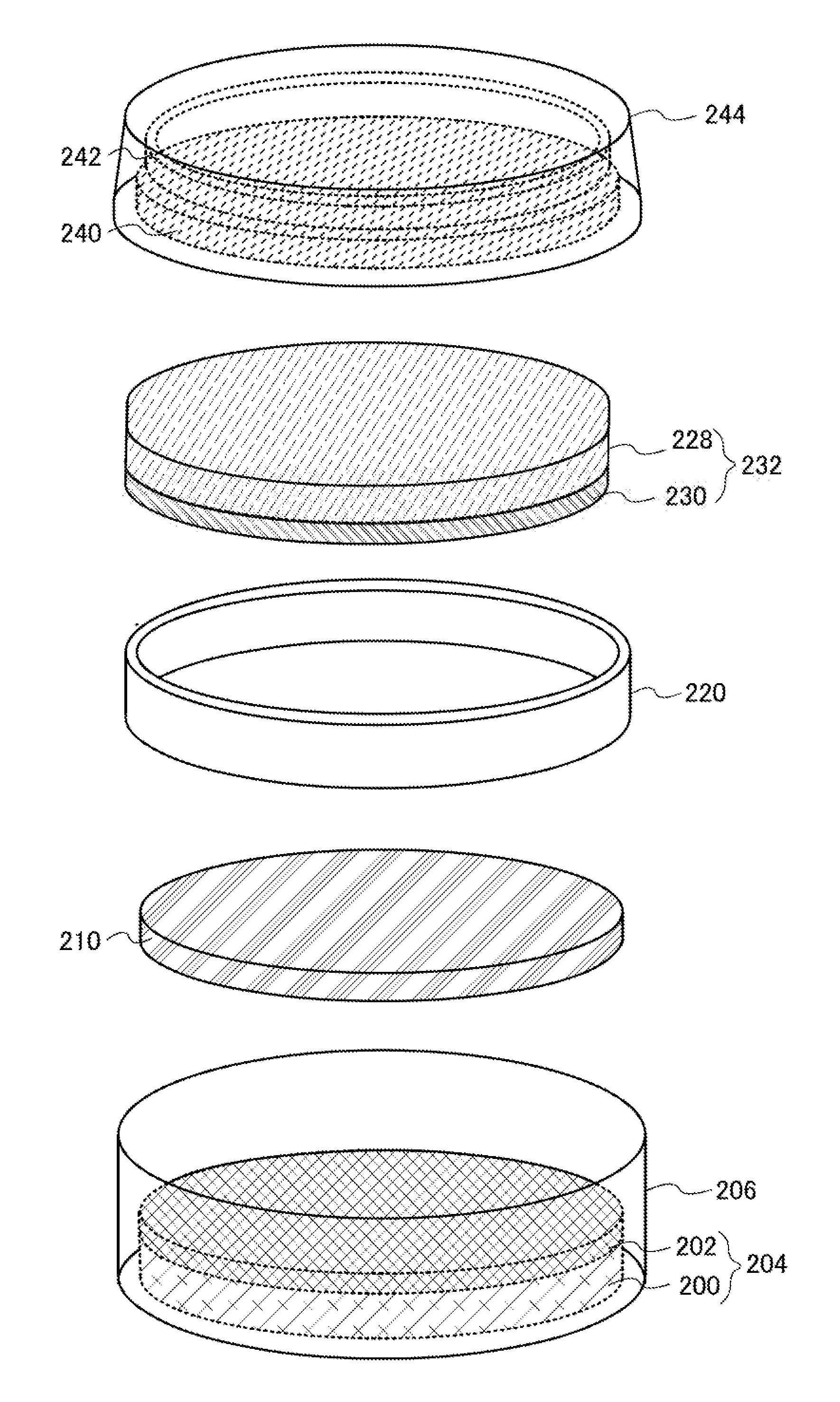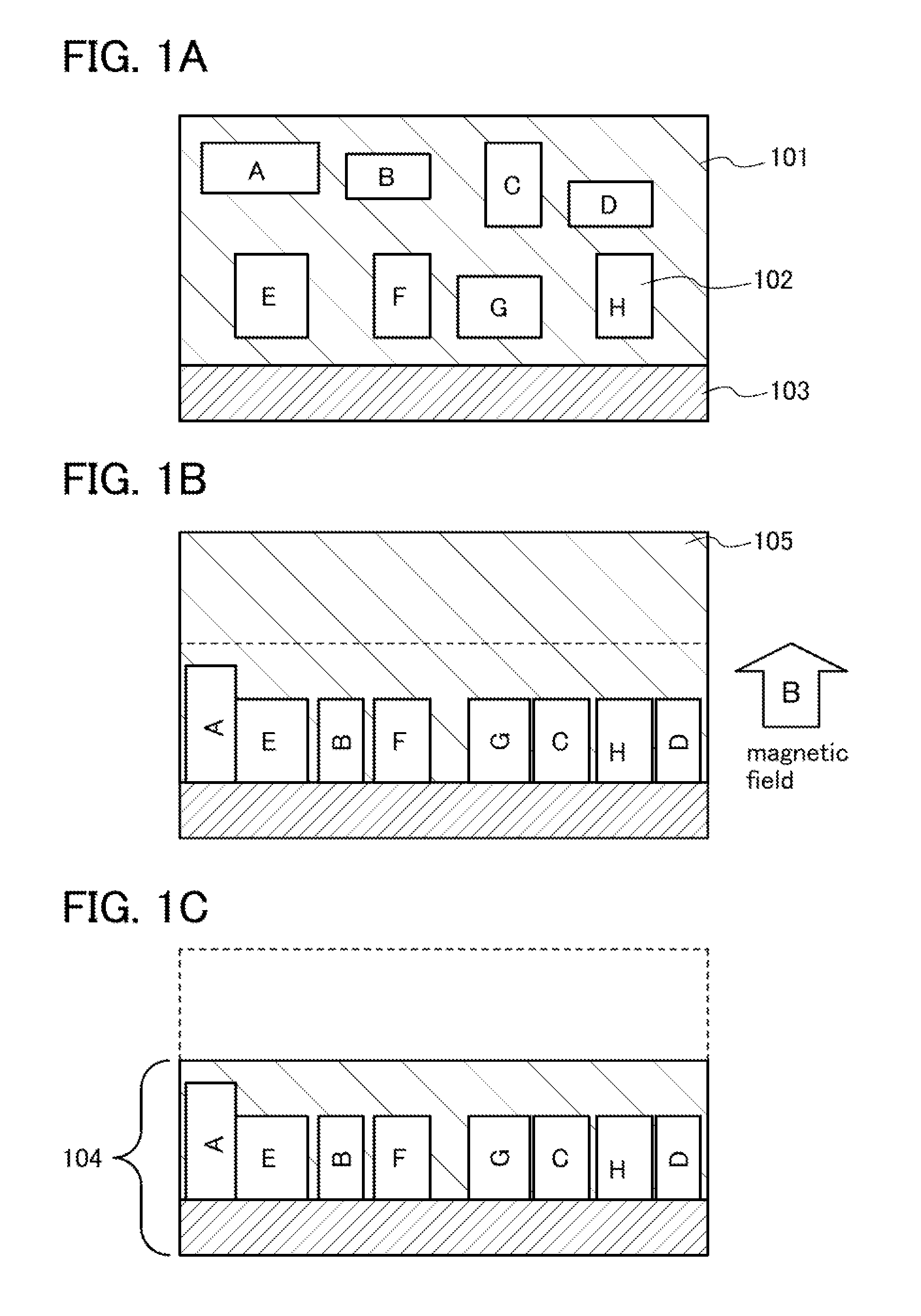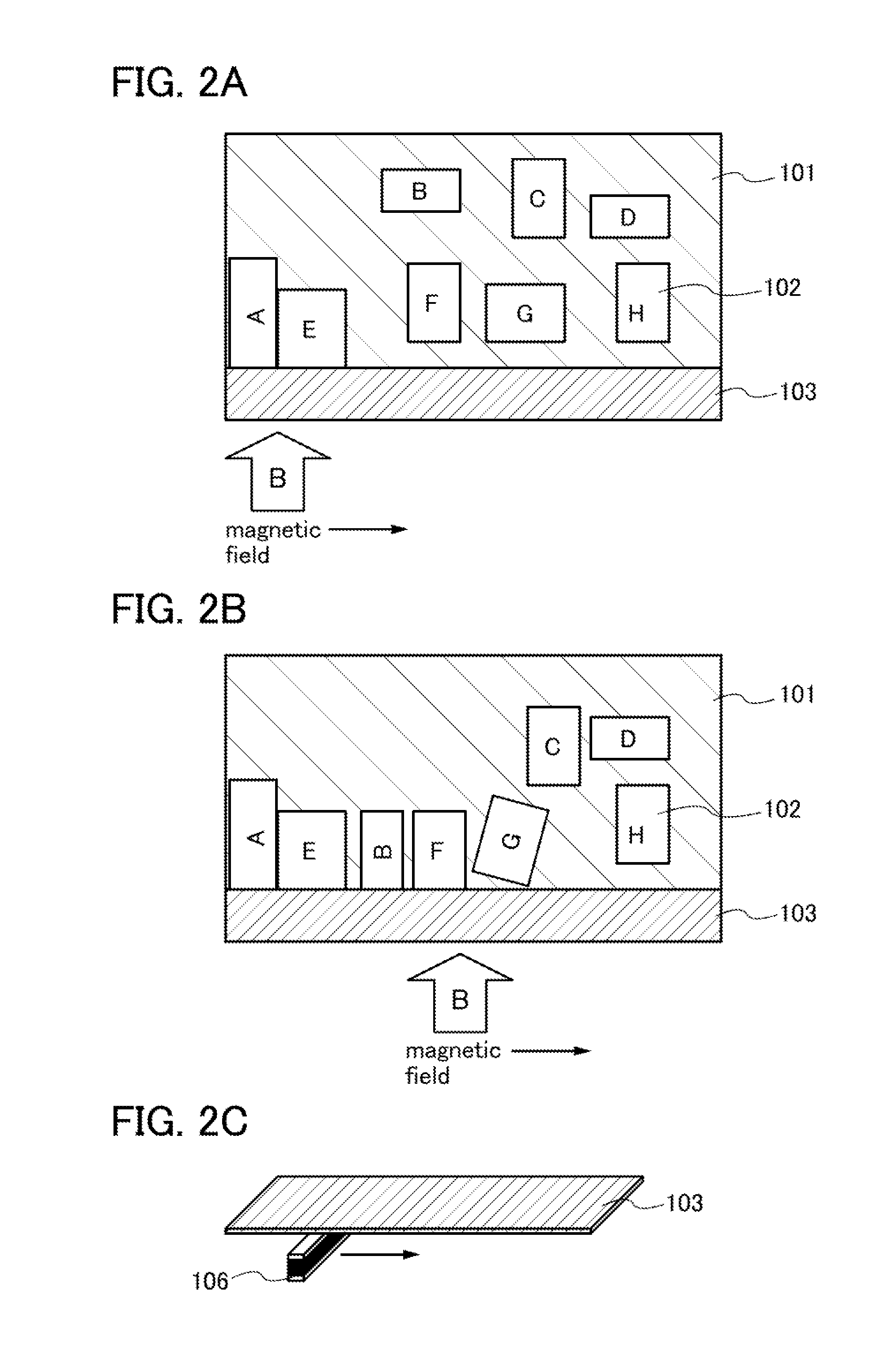Method for manufacturing nonaqueous electrolyte secondary battery
a technology of nonaqueous electrolyte and secondary battery, which is applied in the manufacture of final products, magnetic bodies, cell components, etc., can solve the problems of low ionic conductivity, low magnetic conductivity of iron phosphate, and inability to increase the density of active materials, etc., to achieve high magnetic susceptibility, aggregate more easily, and high density
- Summary
- Abstract
- Description
- Claims
- Application Information
AI Technical Summary
Benefits of technology
Problems solved by technology
Method used
Image
Examples
embodiment 1
[0037]In this embodiment, description will be given of a method for manufacturing a lithium ion secondary battery according to one embodiment of the present invention. The average value of the sizes of positive electrode active material particles is 5 nm to 50 nm, preferably 5 nm to 20 nm.
[0038]A solution method such as a hydrothermal method may be employed for forming positive electrode active material particles other than a solid phase reaction method. For example, when lithium iron phosphate is formed by a hydrothermal method, iron chloride, ammonium phosphate, lithium hydroxide, or a hydrate of any of these is preferably used as a starting material.
[0039]In particular, the positive electrode active material particles preferably consist of single crystals in order to obtain effects of the present invention sufficiently, and therefore a hydrothermal method is preferably employed. Further, a carbohydrate such as glucose may be mixed at the time of baking of the positive electrode a...
embodiment 2
[0050]As examples of electric devices according to embodiments of the present invention, a variety of dry batteries, a variety of storage batteries, and the like are given. As positive electrodes thereof, for example, the ones manufactured by the method described in Embodiment 1 may be used.
[0051]As examples of electric devices according to embodiments of the present invention, electric vehicles, electric power tools, personal computers, mobile phones, and the like are given. Such electric devices are not always supplied with power through wires and thus are provided with storage batteries inside. As positive electrodes of the storage batteries, for example, the ones manufactured by the method described in Embodiment 1 may be used.
[0052]In particular, storage batteries with low internal resistance are needed for applications where a large amount of current needs to be fed even momentarily or where a required current value varies greatly. Therefore, a sufficient effect can be obtaine...
PUM
| Property | Measurement | Unit |
|---|---|---|
| magnetic field | aaaaa | aaaaa |
| size | aaaaa | aaaaa |
| size | aaaaa | aaaaa |
Abstract
Description
Claims
Application Information
 Login to View More
Login to View More - R&D
- Intellectual Property
- Life Sciences
- Materials
- Tech Scout
- Unparalleled Data Quality
- Higher Quality Content
- 60% Fewer Hallucinations
Browse by: Latest US Patents, China's latest patents, Technical Efficacy Thesaurus, Application Domain, Technology Topic, Popular Technical Reports.
© 2025 PatSnap. All rights reserved.Legal|Privacy policy|Modern Slavery Act Transparency Statement|Sitemap|About US| Contact US: help@patsnap.com



